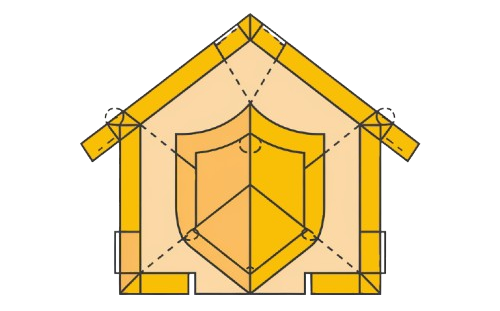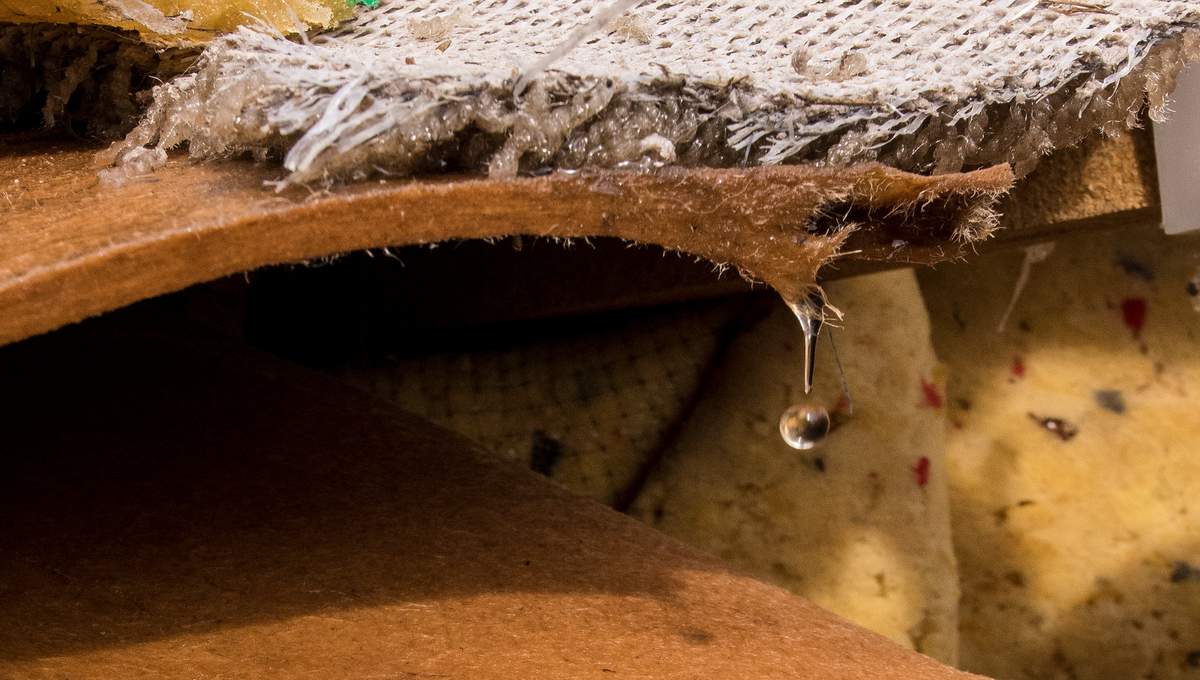If you’re cleaning up the attic, doing some remodeling, or even just storing things in the basement, it’s important to take care of wet insulation right away. Wet insulation often signals a leak, which can lead to serious moisture issues like mold growth, structural damage, and reduced insulation effectiveness. Whether caused by a roof leak, poor ventilation, or a burst pipe, addressing the problem quickly is crucial to avoid long-term damage to your home.
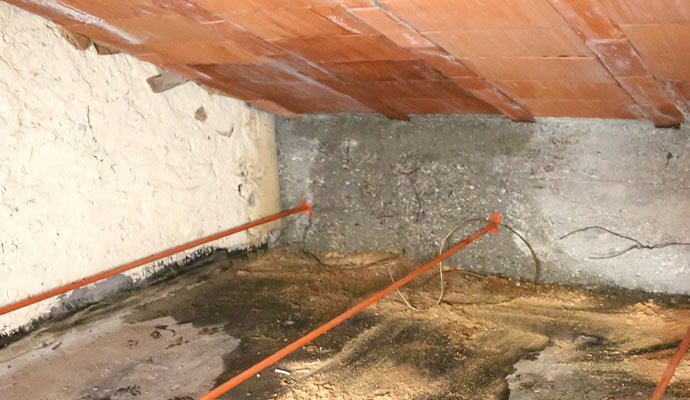
When water seeps into insulation, it spreads fast and compromises not just the material but also surrounding areas. Moisture-resistant materials like Rockwool or Multifoils can help protect your attic from future leaks, as they are better equipped to handle damp conditions. Acting promptly and investing in the right solutions can save your home from costly repairs and ensure it stays safe and energy-efficient.
What Should You Do With Wet Attic Insulation?
If the insulation is wet, you need to act quickly to avoid long-term problems. Small sections that are damp may be able to dry on their own with help from a fan, but larger sections that are soaked will need to be removed. Leaving wet materials in place can lead to mold, structural issues, and other damage. If nearby materials have been affected, it’s best to repair them as soon as possible. Thoroughly drying everything will help prevent further issues. However, if the insulation has been compromised, it’s often best to replace it to ensure your attic remains protected.
What Causes Insulation to Get Wet?
There are many reasons insulation can get wet, and some of the most common causes include the following:
- Leaky roofs and gutters: A roof in poor condition or clogged gutters can allow water to enter your home and come into contact with insulation, reducing its effectiveness.
- Plumbing leaks: Leaks in pipes, drains, or appliances can cause moisture to soak nearby insulation, leading to damage.
- High humidity and condensation: Humid air can cause moisture to collect on cool surfaces, leading to condensation that soaks insulation.
- Flooding or ground moisture: Floodwaters or moisture from the ground can enter basements and crawl spaces, causing porous materials to absorb water.
- Poor ventilation: Insufficient ventilation in the attic or crawl space can cause moisture to get trapped, making it harder for insulation to dry out.
- Snow and ice: Snow can melt and soak insulation if it enters through vents, soffit gaps, ridge openings, or gable areas.
- Faulty weatherstripping: Gaps around doors, windows, or siding can allow humid air to bleed in, leading to moisture build-up inside the home.
How Does High Humidity Cause Water Damage to Insulation?
Daily activities like showering and cooking can generate steam and warm air inside a building, which can turn into moisture if there’s no proper ventilation. This moisture condenses when it hits cool surfaces or cracks in the fabric of the building, causing water to seep into insulation materials. If humidity levels remain high for too long, the insulation itself can become trapped with moisture, leading to serious damage.
Without an adequate outlet, warm air condenses into water droplets, which can turn insulation into a breeding ground for mold. This happens because the dew point is reached when moisture in the air has nowhere to escape via proper ventilation. It’s a simple fact that water damage must be prevented to keep insulation effective. External areas of the building need adequate ventilation to ensure moisture doesn’t get trapped, which can cause long-term damage to the insulation material.
Wet Insulation: What Are the Effects?
R-value:
When insulation becomes wet, it loses its thermal performance, which is measured by its R-value. The higher the R-value, the better insulation works to keep your home warm in winter and cool in summer. But when insulation is soaked with water, its air pockets get displaced, and instead of being an insulator, it becomes a conductor of heat. This ineffective insulation means your home’s heating and cooling equipment will have to work harder, causing energy bills to rise.
In fact, having wet insulation can be worse than no insulation at all, as it may trap moisture within your walls, leading to damage over time. When heat is trapped in wet insulation, it transmits through the building rather than blocking it, which is the opposite of what good insulation is supposed to do. This inefficient performance could cause you to pay more for heating and cooling, making your home’s energy use far from effective. It’s important to check for wet insulation to avoid these issues and keep your home well-insulated.
Mold Growth and Air Quality Issues from Wet Insulation
When moisture gets trapped in insulation, it creates the perfect conditions for mold to grow. Mold thrives in dark, damp areas, like a wall cavity, where air cannot escape. Over time, it can start to show through the wall as black spots, which is a homeowner’s nightmare. This growth can cause serious health problems, especially for vulnerable people, like young children or elderly relatives, who may experience asthma attacks, coughing, or other air quality issues.
Once mold is present, it’s difficult to get rid of, and it will continue to spread if the area remains moist. Wet insulation makes the problem worse because it’s installed in small spaces where moisture is trapped, allowing mold to thrive. Living near mold can impact anyone, but it’s especially risky for those with existing health conditions. The best way to prevent this problem is to ensure the area is dry and properly ventilated before it becomes a serious issue.
Also Read: Can Mold Grow on Insulation?
Wet Walls Can Cause Structural Damage
When walls are left wet, it can lead to serious structural damage over time. Water may run underneath the floor or collect in wall cavities, causing visible signs like bubbling wallpaper, peeling paints, or brown watermarks. These signs are often found on walls, but the damage itself is rarely visible at first. If moisture is left trapped, it can cause your insulation to fail, making the structure weaker. Roof leaks, poor drainage, or other moisture issues that go unnoticed can lead to longer-term problems if not addressed quickly. Know the signs and take action as soon as you see them to prevent overall damage.
Signs You May Have Water-Damaged Insulation
You may not notice water damage right away because insulation is often hidden within walls, ceilings, or closed cavities. However, signs to look for include
- Peeling Paint,
- Flaking Wallpaper,
- Stains
- Damp Smell In Your Building
- Mold Growing
or notice elevated moisture levels,it’s important to call an expert. They can confirm your suspicions and check if the insulation is damaged. You can also try using a moisture meter to detect any hidden moisture. Water-damaged insulation can cause other materials, like floors or walls, to become moist and weak, leading to serious damage if left untreated. Ultimately, you should open the wall cavity to allow it to dry out or replace damaged materials to prevent further issues.
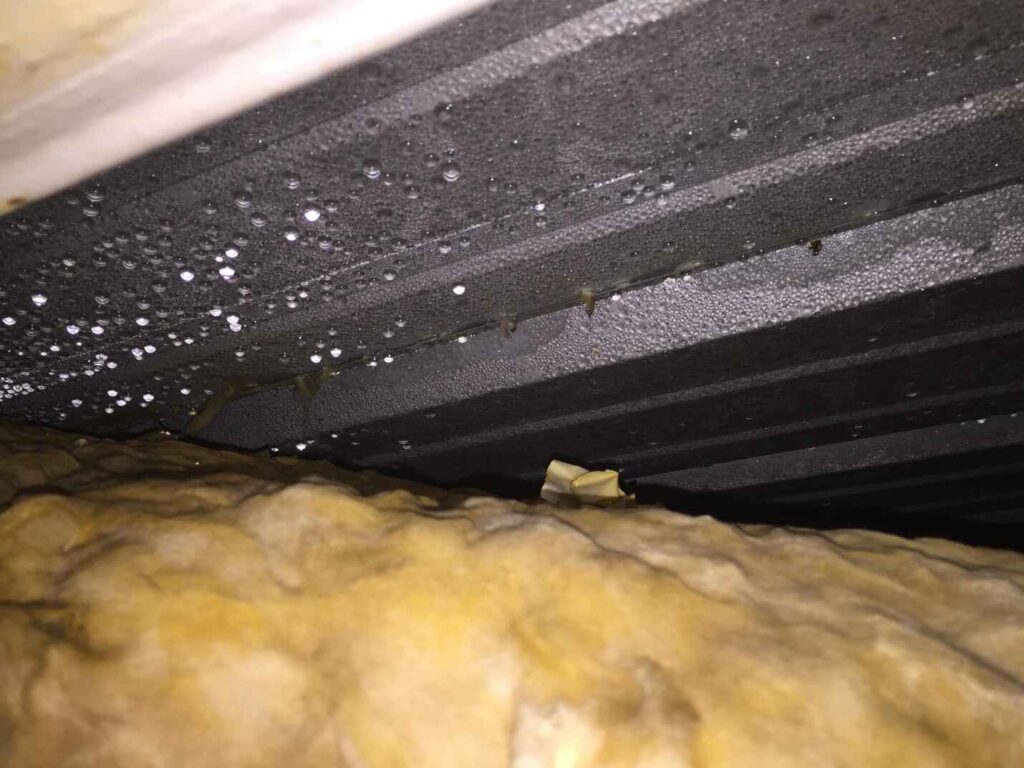
How Different Insulation Materials React to Moisture
Not all insulation materials react the same way to moisture. You can buy more resistant insulators for wet areas such as bathrooms. In fact, materials like Rockwool and Multifoils are better at handling moisture compared to traditional insulation. It’s important to see the differences and read about how they work so you can use the right one around your home to prevent damage.
What Happens When Fiberglass Insulation Gets Wet?
Fiberglass insulation is made of thin fibers spun from glass, which makes it generally resistant to moisture. However, when water gets into fiberglass insulation, it affects its ability to insulate properly. The air spaces within the fibers can become displaced by moisture, causing the material to lose its insulating functionality. If the fiberglass becomes soggy, it won’t dry out naturally like other materials. In this case, you need to remove the wet insulation and replace it with new insulation to prevent further damage.
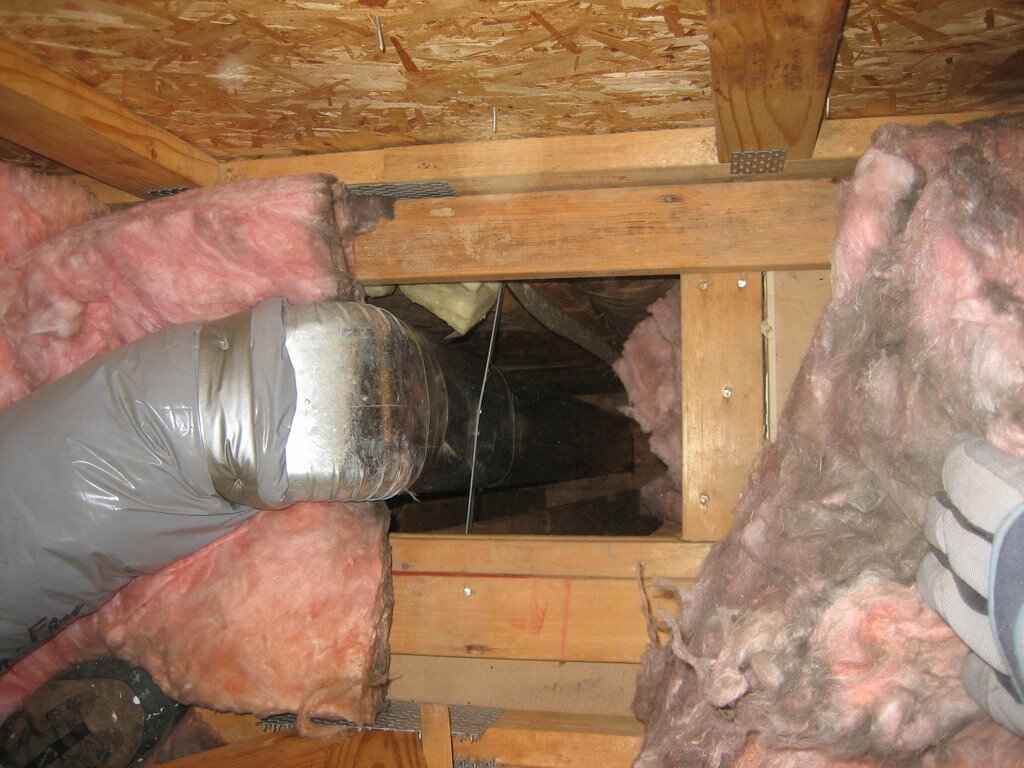
If leaks happen in the roof, pipe, or ventilation system, it’s important to check the affected areas early. Regular inspections can help you catch issues before they become significant problems. If the insulation is only slightly damp, you can use fans or a dehumidifier to dry it out. However, if it’s drenched or smelly, it’s better to throw it away and install new batting or batts to maintain your home’s insulating performance.
One trick to prevent moisture issues is to install vapour barriers and make sure your loft or crawl space has proper ventilation. Fiberglass insulation works well when it stays dry, but persistent moisture can reduce its effectiveness dramatically. If you find water damage, act quickly to remove the damaged insulation, dry out the area, and prevent future leaks.
What Happens When Cellulose Loose-Fill Insulation Gets Wet?
Cellulose loose-fill insulation is made from plant fibers, which makes it highly susceptible to moisture. If water soaks into the insulation, it can cause warping, rotting, and even mold growth in nearby timbers and structures. Unlike other types of insulation, cellulose acts like a sponge, absorbing moisture throughout the space. This saturation threatens the integrity of the insulating material and the surrounding construction, especially in areas like the attic or crawlspace, where moisture might sit for days without proper ventilation. If left wet, the insulation will lose its ability to insulate properly and could start breeding mold, which can be difficult to remove.
One of the biggest risks with cellulose insulation is that it doesn’t dry out easily. The wet insulation needs to be removed and replaced entirely if it’s left for too long. Surprised homeowners often see gray, soggy insulation that has already caused damage to the surrounding wood and materials. To prevent further issues, you can choose eco-friendly options that are more resistant to moisture or install vapor barriers to keep water from getting into the insulation in the first place. It’s also important to regularly check the attic or crawlspace for leaks and take action quickly if you notice any water damage.
How Does Rockwool Insulation React to Moisture?
Rockwool insulation is made from stone or slag, which makes it resistant to moisture and damp environments. It is often treated with a water-repellent coating to help it resist leaks. Unlike organic materials, Rockwool doesn’t promote mold growth because it allows vapour to pass through. Even if the insulation gets wet, it can dry out naturally and regain its performance once it fully dries.
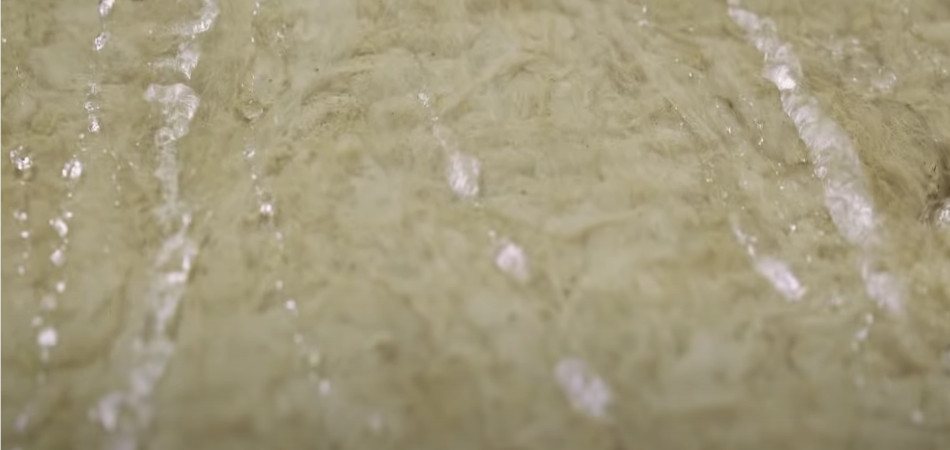
Rockwool is designed to handle moisture well. It doesn’t wick water, meaning it won’t pull moisture into surrounding areas. This makes it ideal for areas with leaks, like around pipes or vents. While it can get wet, it will still perform effectively. However, it’s important to check for any damage and ensure the insulation stays in good condition to prevent long-term moisture issues.
How Does PIR Insulation React to Moisture?
PIR insulation, or polyisocyanurate foam, is resistant to moisture, but it is not fully waterproof. It is made of closed cells filled with gas, which helps it perform well in damp environments. However, because these cells are not totally watertight, PIR insulation can lose its insulating properties if exposed to excessive water for an extended period of time. Small amounts of moisture will not damage it, but excessive water can cause it to break down and begin losing effectiveness.
To protect PIR insulation from getting wet, manufacturers add foil facings on both sides of the insulation board. This foil helps resist moisture and protects the material. However, if the board is exposed to fire or naked flames, it does not react well. If PIR insulation becomes damp, it’s best to dry it out quickly and replace it if it remains damaged. For wet areas, always use insulation that is more moisture-resistant to prevent further issues.
What Happens If Loft Insulation Gets Wet?
If loft insulation gets wet, it can cause serious problems inside your attic. Air from your home, especially heated air, may rise through light fittings or small cracks in ceilings and walls. When this warm air reaches the cold surface of felt or roof tiles, it condenses on the underside, leading to moisture build-up. Over time, this condensation can drip onto the insulation, causing wet patches to appear.
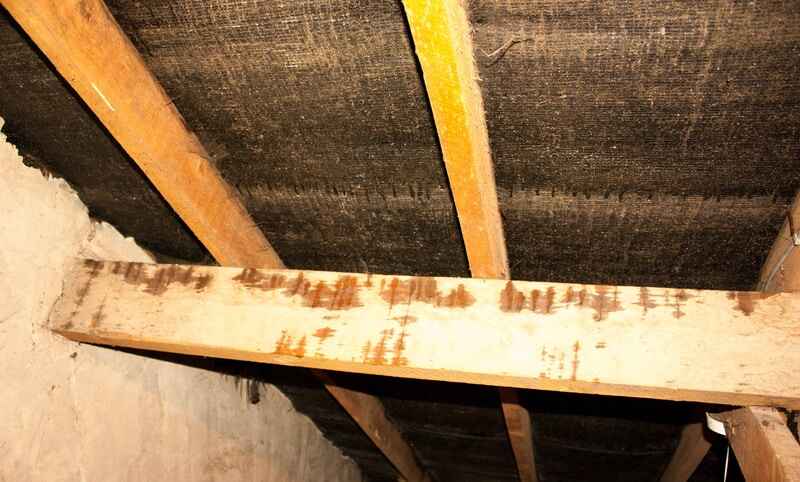
Another possible cause of wet loft insulation is a roof leak, which could happen if a tile slips or flashing around the chimney comes loose. It may not be a torrent of water, but even a small drip can soak the insulation. If this happens, the wet insulation will lose its ability to insulate properly and may lead to mold growth. Regular checks around storage spaces in the loft can help detect leaks early and prevent further damage to your home.
Hidden Risks of Wet Cavity Wall Insulation
When cavity wall insulation gets wet, it can cause serious problems for your home’s structure. Moisture entering the wall cavities can lead to mold growth, damp spots, and damage to wooden sections of your walls. This happens when water infiltrates through damaged brickwork, gaps, or leaking gutters, allowing rainwater to seep into the insulation material. If the outer wall isn’t properly sealed, moisture collects inside the cavity, and ventilation issues make it worse. Over time, this can affect the foundation and even cause cracks in walls or stucco.
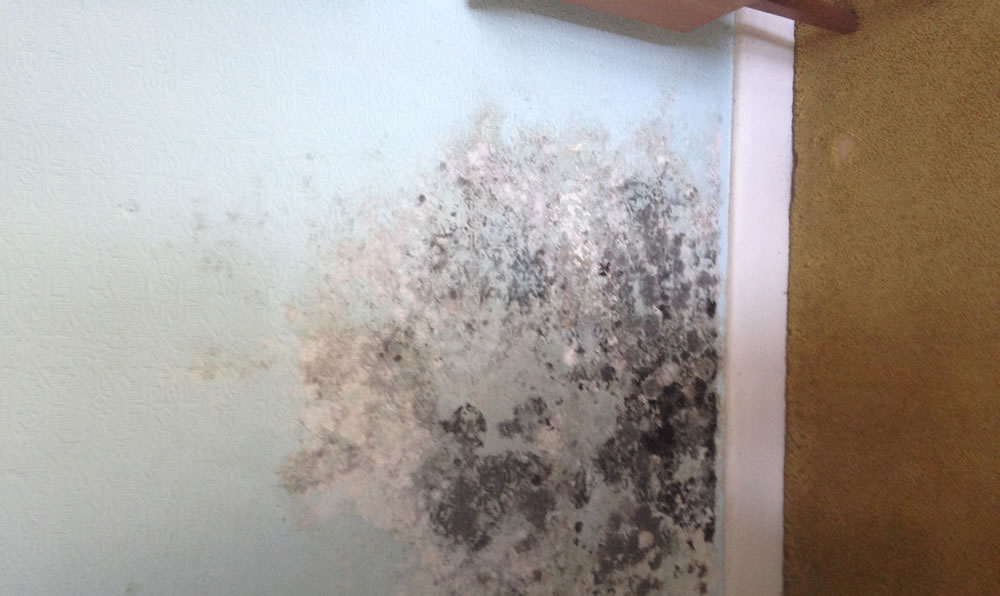
There are several factors that can cause wet insulation, including poor drainage around the building or inadequate pointing on exterior walls. Here are some common causes and steps to prevent damage:
- Water infiltration from cracked bricks, gaps, or damaged mortar.
- Inadequate ventilation inside the cavity, which traps moisture.
- Leaking gutters and downspouts, allowing water to collect at the base of the wall.
- Poor drainage systems, causing water to enter the structure from the foundation.
To reduce the risks, you should inspect your walls frequently and repair any cracks or gaps to prevent water from entering. Applying waterproof coatings or using resistant materials like stone or stucco can help protect your home’s outer walls. It’s also important to install proper drainage systems around the foundation to redirect water away from the walls. Hiring a professional can help you trace potential issues and address them before they cause serious damage.
If wet insulation isn’t replaced, it will lose its insulating properties and allow moisture to spread, causing mildew and mold growth inside the walls. This can result in poor air quality and structural problems. Drying sections thoroughly and sealing all potential sources of leaks are key to keeping your walls safe from long-term moisture issues.
Can Wet Insulation Dry Out?
Yes, wet insulation can dry out, but the amount of time it takes will depend on several factors like the type of insulation, ventilation in the area where it’s located, and the ambient temperature and humidity. However, in most cases, it’s best to remove and replace the wet insulation with new materials to ensure your home remains effectively insulated.
If removal isn’t possible immediately, you can follow these steps to help dry out the insulation:
- Remove standing water using a wet/dry vacuum, mop, or other suitable tools.
- Use fans and dehumidifiers to help remove moisture from the air, which will help the insulation dry out quickly.
- Blow warm air over the insulation with a fan heater to speed up the drying process.
- Once it’s dried, check carefully for any signs of damage, deterioration, or lost effectiveness.
- If the insulation is damaged, it should be removed and replaced with new insulation.
Also Read: When to Replace Attic Insulation?
How to Prevent Wet Insulation?
Prevention is definitely better than a cure when it comes to wet insulation. If water enters your attic or crawl space, it can reduce the effectiveness of the insulation and even pose health risks. To prevent moisture from getting trapped, make sure your roof, gutters, and appliances are in good condition. Leaking pipes or cracks in the roof can allow water to enter your home, causing insulation to become wet. Taking steps to seal gaps and ensure proper ventilation is key to keeping your home dry and efficient.
Here are some simple steps you can take to prevent wet insulation:
- Check your roof and gutters regularly to ensure they are not leaking.
- Make sure crawl spaces and attics are properly ventilated to prevent moisture from building up.
- Seal any gaps around pipes, appliances, or cold surfaces to stop water from entering.
- Consider using a vapour barrier to protect insulation from moisture in high-humidity areas.
If your insulation gets wet, it’s important to remove it quickly and replace it if necessary. Taking care of leaks as soon as possible will help prevent long-term damage to your home. Maintaining your insulation properly ensures it remains effective and keeps your space safe and dry for years.
How to Stop Moisture from Building Up Inside Your Home
Preventing moisture inside your home is crucial to protect insulation and building materials from damage. High humidity and condensation can lead to mold growth, which reduces the effectiveness of your insulation. Moisture quickly accumulates in areas like attics, crawlspaces, and basements, especially when there are leaks or poor ventilation. To reduce the risk, you should install proper ventilation systems to ensure moisture escapes instead of building up inside the walls or ceilings.
Here are some simple steps to prevent moisture issues in your home:
- Use exhaust fans in kitchens and bathrooms to remove excess steam from hot showers and cooking.
- Install an MVHR (Mechanical Ventilation with Heat Recovery) system to draw air through ducts and remove moisture from the air.
- Fix plumbing leaks and roof damage immediately to prevent water from seeping into insulation.
- Consider using moisture-resistant materials, such as Rockwool insulation or Multifoils, in areas prone to humidity.
- Use a dehumidifier in closed spaces, like basements and attics, to control humidity levels and keep the air dry.
If moisture is discovered inside your insulation, it’s important to remove the wet sections and replace them with new insulation. Proper ventilation and sealing are essential to prevent further damage and protect your home from future issues. Taking these steps will help maintain a healthy, dry environment inside your home and reduce the risk of mold.
Final Thoughts on What to Do If Attic Insulation Gets Wet
Wet attic insulation can cause serious issues if not handled properly. Moisture can reduce insulation’s effectiveness, cause mold growth, and even damage your home’s structure. Whether fiberglass, Rockwool, or cellulose insulation gets wet, it’s important to remove moisture quickly and replace damaged sections if necessary. Preventing leaks and ensuring proper ventilation will help protect your insulation and keep your home safe from further problems. By taking simple steps, you can reduce the risks and maintain effective insulation for years to come.
FAQ
Does Attic Insulation Need to Be Replaced if It Gets Wet?
Yes, if insulation gets wet, it can lose its effectiveness. Compressed or contaminated fibers will create clumps, making it hard to dry. At that point, it’s better to replace it completely to prevent further damage.
Will Insulation Dry Out If It Gets Wet?
If insulation is just a bit damp, it will dry out when exposed to air. But if it gets soaked, you will need to remove it because air cannot reach the wet fibers, and it won’t dry properly. In this case, it’s better to replace the insulation.
What to Do If Roof Insulation Gets Wet?
If your roof insulation gets wet, you should remove the wet parts to prevent moisture from causing damage. Excessive exposure to water will break down its performance, so it’s best to dry it out naturally. However, if the insulation doesn’t dry properly, you will need to replace it to keep your home well-insulated.
How Long Does It Take for Attic Insulation to Dry?
The drying time for wet insulation depends on several factors, such as the type of insulation and air circulation conditions. Fiberglass insulation can dry within 2 to 3 days under ideal circumstances, while cellulose insulation may take longer because it is more absorbent. In some cases, it can take several days or more for the attic to fully dry out.
